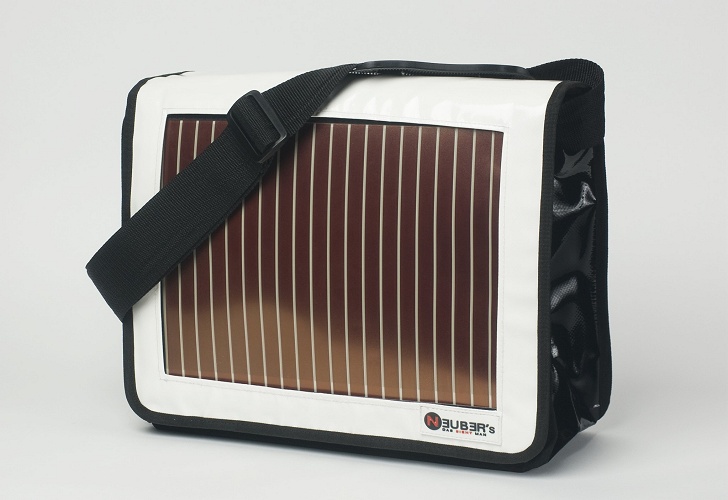THE next-gen solar cell outfit has market capitalisation of $120 million, yet management feels investors have not responded to announcements with suitable zeal.
Fair enough, but Dyesol's path to revenue has been slow.
Still, the next 12 months or so should be pivotal for the Queanbeyan outfit, which has pioneered dye-solar cell (DSC) technology. Instead of generating solar power from silicon panels, DSC does so by sandwiching active ingredients between steel or glass to create artificial photosynthesis.
Dyesol is in a joint venture with British steelmaker Corus to produce Colorbond-style roofing and fencing, which doubles as giant solar panels. DSC captures sunlight even in gloomy northern hemisphere conditions.
Corus is planning commercial production from July next year.
Earlier this month, Dyesol announced a tie-up with US glassmaker Pilkington to produce glass flatpanels with the same energy-producing traits. And there's another collaboration in the offing, with a German carmaker (hint: there's a new subsidiary called Dyesol Automotive Bavaria). The emphasis here will be on a flexible plastic blind to recharge batteries on hybrid cars.
Pilkington's massive factory in Toledo, Ohio, churns out glass for the car industry in nearby Detroit, but we all know Motown ain't what it was. But while the glass collaboration could end up bigger than the Corus venture, the steel deal promises revenue in the short term.
Caldwell says the planned initial 1 million-square-metre-a-year scale-up plant will generate revenue of $50m for Dyesol, rising to $1 billion by 2016 if a 20 million square metre plant eventuates.
Dyesol has no desire to be a manufacturer, but earns its keep by supplying its knowhow and the consumable ingredients (electrons, titania semiconductors, organic dye).
As with so many other tech stocks, we detect some tension between the scientific and commercial imperatives. The newly appointed Caldwell has a background in investment banking, so expect more talk about cashflow and when investors might see a buck or two. Speculative buy.....
Quelle:
http://www.theaustralian.com.au/business/solar-maker-secures-links-in-steel-and-glass-dye/story-e6frg8zx-1225842055702
--------------------------------------------------
Konarka Gets $20M More for Organic Solar Cells$150 million raised—so far—in a decade-long quest for low-efficiency, niche-market solar cells.

Whatever else one can say about organic solar cell aspirant Konarka, the startup sure is great at raising money.
Konarka just announced $20 million in strategic investment from Japan's Konica Minolta. That brings Konarka's total to more than $150M in angel funding, venture capital, strategic investment and private equity money raised since 2001. And throw in at least $10 million more in DARPA, DOE, NSF, U.S. Army, bank loans and credit lines in the last ten years.
The latest investor to grace that long list, Konica Minolta, is in the OLED business, which might provide some synergy with Konarka's roll-to-roll technology -- they hope.
Konarka is headquartered in Lowell, Mass., and has a manufacturing facility in New Bedford, Mass., with European headquarters in Nurnberg, Germany, business development offices in Asia, and a research and development facility in Austria. That sounds like a healthy burn rate. Konarka was founded in 2001 by scientists at UMass Lowell and has received investment from Chevron, Good Energies, Draper Fisher Jurvetson, the Massachusetts Green Energy Fund, Vanguard Ventures, Mackenzie Financial, Partech, and many more.
I have spoken to a few of those early investors about their investment in Konarka. One comment, off-the-record, was unprintable; another comment, made anonymously, was that the investor had no idea at the time of investment that First Solar would hit the numbers on cost and efficiency that they have. This anonymous commenter also added that Konarka was in a sort of limbo of commercial production capability but no production demand -- in essence, that their low efficiency nets out in no incentive for mainstream market adoption.
Low efficiency and difficulty in achieving long lifetimes leave OSCs to go after niche markets like consumer wearables and luggage. The ten-year-old startup has also mentioned tents, awnings and BIPV as possible end-markets. These applications could result in real business, but it seems difficult to get to serious megawattage -- and difficult to justify as a VC-funded firm.
Next generation solar cell developers include Konarka and Plextronics in the organic photovoltaics field, and Dyesol, EPFL, G24i, Mitsubishi and Peccell on the dye-sensitized-cells front.
OSCs remain a compelling technology. One of the appeals of third-generation thin-film solar cells is that they can be manufactured using solution-based, low-temperature roll-to-roll manufacturing methods, which use conventional printing techniques on flexible substrates. That is the sirens' call that keeps the VC money flowing.
Our analyst team at GTM Research has written a report and forecast on "third-generation" solar, which includes this comparison of dye-sensitized cell technology versus organic solar cell technology:

My VCs gave me $150 million and all I got was this Sunbag.


